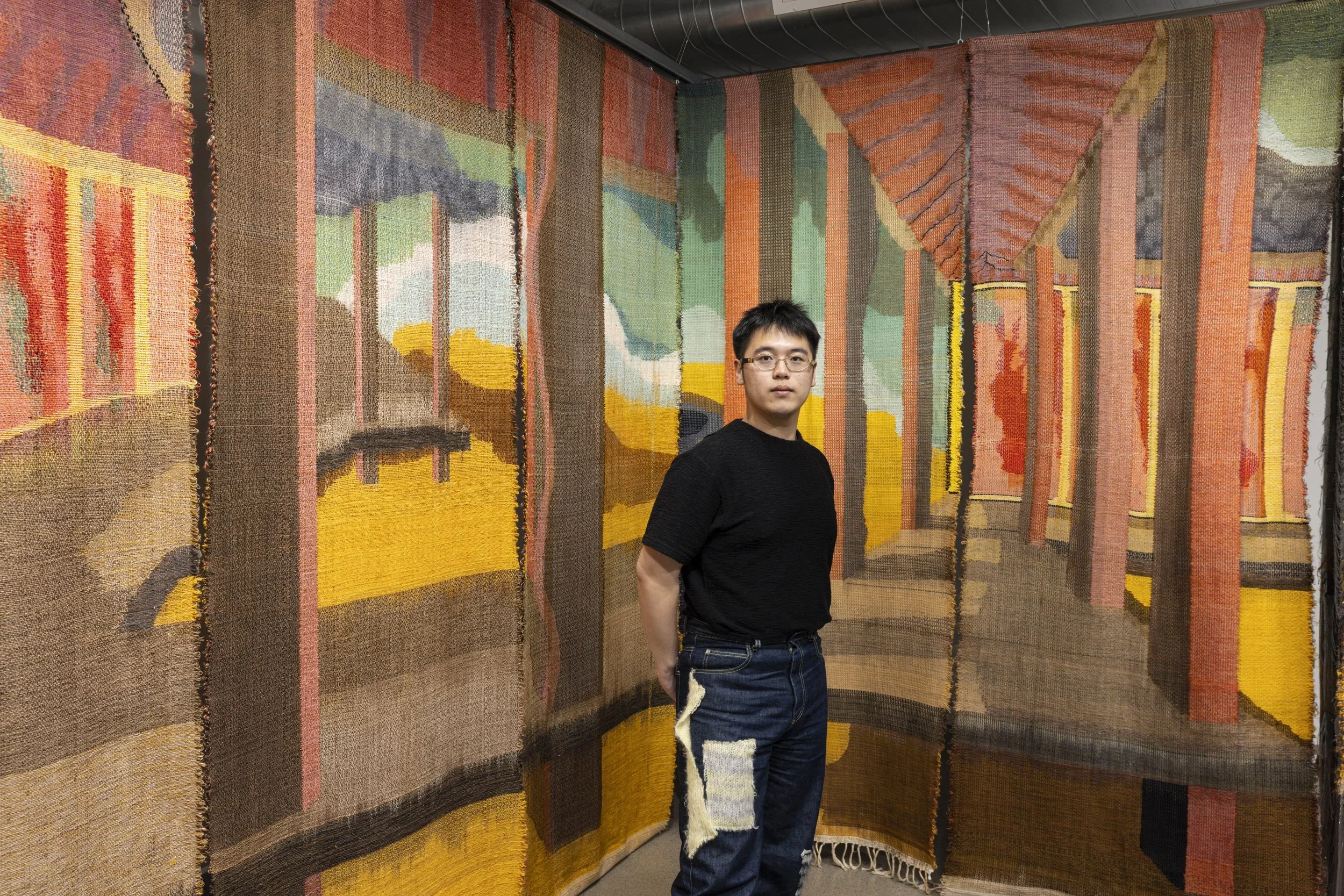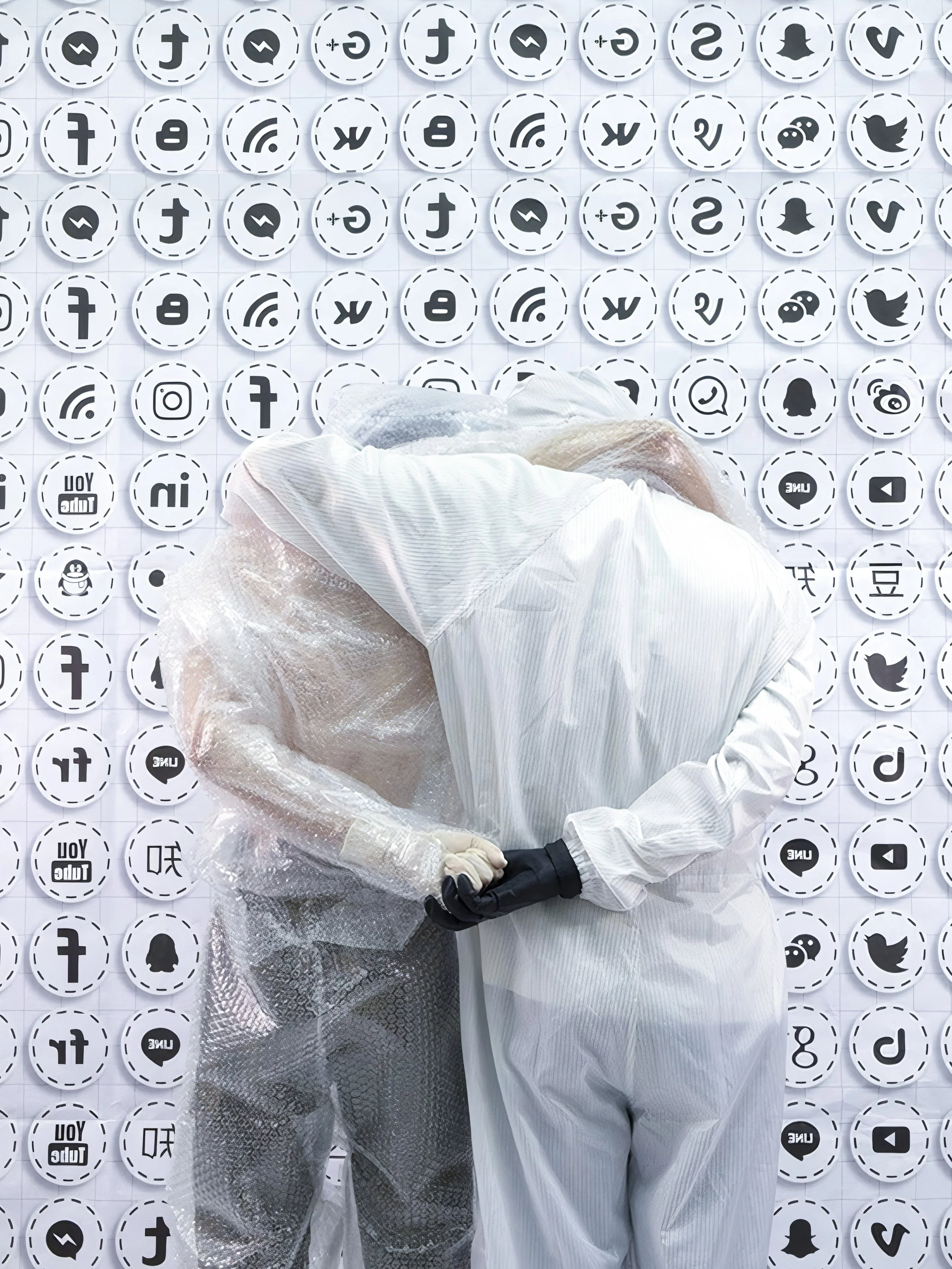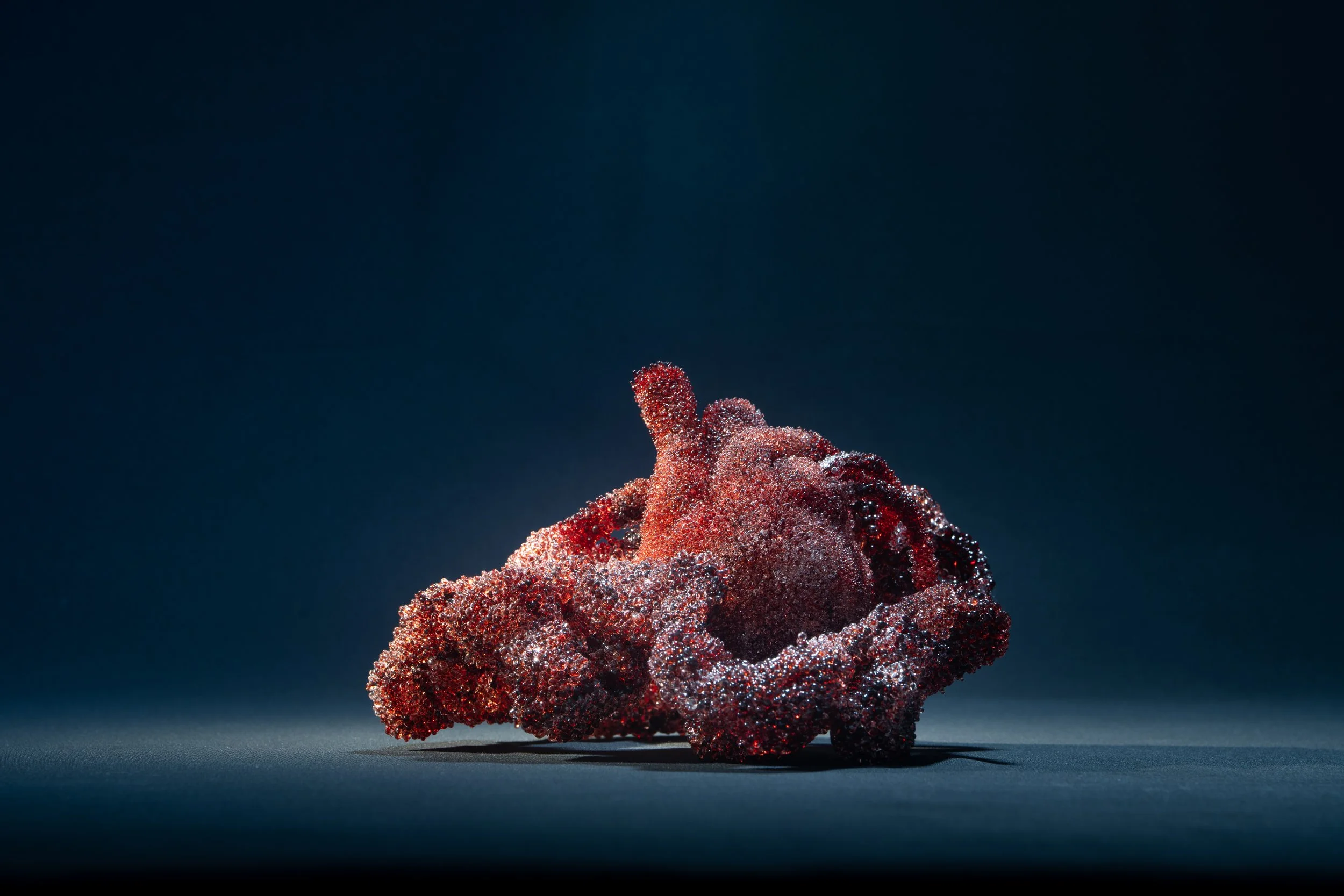10 Questions with Aleks Rosenberg
Aleks Rosenberg is a multi-disciplinary artist and filmmaker who resides in the United States and has exhibited and sold his works internationally. The central themes found in his works relate to the 'outsider looking into the darkness of the human vortex' countered by the optimism of 'no matter what, the sun will always rise tomorrow'. For Rosenberg, there has always been the tension between light and darkness, and as such, his compositions seek to find a balance between the two extremes. In more recent series, he uses found objects and repurposed materials to leave clues for stories to be told.
ARTIST STATEMENT
Over the years, my work has evolved through various disciplines and styles in a singular pursuit of exploring mediums of self-expression and the need to connect with the viewer.
I work with materials that, at first glance, seem contradictory and perhaps arbitrary. I may start with an idea festering in my brain for a long time or maybe something that sparked my interest a minute ago. I begin by playing with the materials at hand, slowly turning the ethereal concept into a concrete form. It is the search for the right imagery and objects and the handling of the materials that eventually bring the evolved ideas to life. When I say 'evolved idea,' I mean that the final product may have an exact or minuscule resemblance to the original idea. I kind of treat each project like a scientific experiment where the work builds upon itself. The accidental discoveries guide the mechanics of the execution and the final piece. For me, the magic happens when work blends with play, and time stands still.
Photo credit Aleks Rosenberg©
INTERVIEW
In your youth, when did you realize that you were going to become an artist?
That's an interesting question. I think in kindergarten, I got my first taste of being recognized for being good at art when I painted a flower for Mother's Day. The praise I received felt good, so I continued, and the more I painted and drew, the better I got at it and the more recognition I received. This gave me a sense of pride and inclusion with new friends when we moved from place to place. But, as a kid, I always wanted to be a fighter pilot. I don't know why. My first real awareness of becoming an artist and making a career out of it started in high school in Brooklyn, New York. When, by a sheer accidental chain of events, I got the most incredible art teacher, Mr. Leon Friend. He opened my eyes to the art world, and I never looked back.
Could you tell us a little more about your background, and how did you begin making art?
It's a long, winding road. I was born in 1952 in a remote village in Central Siberia. My mother and father were both exiles in Russia. Escaping Hitler, my mother left Poland, and my father left Hungary, and both wound up prisoners for six years in Siberian gulags, but that's a whole other story. As an infant, I contracted Cholera forcing my family to move clandestinely to a warmer climate in Khirgistan, where we made our home on a collective farm. As I recovered, I learned to work with my hands and simple tools by helping my father around the farm.
On my 7th birthday, my family made a daring migration across the border in a freight car into Poland in the dead of winter. Although Poland was also, at the time, a communist country, it was politically less oppressive than the Soviet Union, and we were helped greatly by my mother's friends from before the war to immigrate to Canada eventually. Years later, when I became a filmmaker, I made a feature film, ZELIMO, based on that experience. It was well received and won best first feature film at Worldfest-Houston International Film Festival.
From Canada, we moved to the United States, where we settled in Brooklyn, New York. Although I already enjoyed drawing and received encouragement from friends, my trajectory into the art world started in Lincoln High School. In the 9th grade, I almost failed Art Appreciation, a basic introduction class to art. I always finished rudimentary assignments very quickly and for the rest of the period, became bored and disruptive and was sent to the department chair for punishment. That's when I met Mr. Leon Friend. I don't know what he saw in me at that time, but he enrolled me in advanced art classes reserved usually for seniors, and my life, especially my relationship with art, changed forever. I took every art class available with his guidance, including printmaking, graphic design, stage design, photography, sculpture, book publication, and painting at the Brooklyn Museum Art School with another fantastic teacher, Francis Cunningham. By the time I graduated from Lincoln High School, I was fortunate to receive the most incredible education in art. I produced a portfolio of work that got me several awards and shows and a scholarship to Pratt Institute.
Later, at Pratt Institute, I got hooked on animation and created two 35mm short animated films that went on to win a number of film festival awards and were screened at the New York Metropolitan Museum of Art and at Brooklyn Museum. I switched my major from fine arts to film, and, after graduating, I started my first film production company with three fellow graduates. We went on to create animations for such clients as ABC TV Emmy winning children's series Animals, Animals, Animals, and special effects for feature films and TV specials.
As a principal of a number of successful film production companies in New York and Miami, I was able to produce and direct commercial projects for such clients as IBM, AT&T, Bell Labs, American Express, Chevrolet, BMW, Prudential, People Magazine, Pepsi Cola, MTV, CBS, ABC, Sprint, Avon, Marvel Entertainment, and music videos for Warner, RCA, Atlantic, CBS, and Columbia Records.
Another fluke that happened to me was when I visited a Yale University friend to show one of my short films. After the viewing, I was encouraged to apply and got a scholarship to the MFA program in directing and screenwriting. Being busy running a film production company, it took me nine years to get my MFA from Yale. At that point, I started writing longer format screenplays, culminating with my first feature film, Zelimo, which I directed and produced. https://dvd.netflix.com/Movie/Zelimo/70061887
As the main income source, I continued to direct and produce commercial film projects for major clients. The flexible schedule gave me time to also work on my art projects.
Fast-forward to recent times. I have returned to fine arts full time with a series of shadow boxes, digital paintings, and photography. The skills I have acquired working in motion pictures I applied to fine arts. Since the pandemic lockdowns, I have devoted most of my time to a new series of mini-dioramas using found objects and only repurposed materials to create alternate worlds for the viewer to explore and get lost during these unprecedented times.
Photo credit Aleks Rosenberg©
Photo credit Aleks Rosenberg©
Photo credit Aleks Rosenberg©
Photo credit Aleks Rosenberg©
What are you trying to communicate with your art?
What I'm trying to communicate with my art is a sense of desire to question the norms and not take things at face value. To create a slight discomfort and disrupt complacency. To regain and retain a childhood sense of curiosity and have an open mind to enjoy new experiences.
The combination of mediums and expressions in your work creates a deep dialog with the viewer. How do you successfully express your vision with different mediums?
My dialog with the viewer starts with a dialog with myself. I can tell you that a lot of times, that's a messy business. I usually work on multiple projects in different mediums at the same time. This process opens a larger canvas to explore different themes and approach them from different perspectives. When I am lost for a way of expressing what I have in my head in one medium, I jump to another. To me, each medium has its own languages and its nuance. Sometimes I layer the different mediums into one image to, hopefully, get a certain effect I envisioned or evolved from. For example, my diorama series uses graphic, sculptural, collage, and, for the kinetic pieces, motion to affect the viewer. Having these tools helps me distill what I would like to convey to the viewer in a more meaningful way.
Photo credit Aleks Rosenberg©
Photo credit Aleks Rosenberg©
Do you ever experience rejection?
Of course. Being an artist attempting to create something unique in a world where everything has been done and said in many ways, is challenging. The road of an artist is littered with many failures and choruses of doubters at every turn. There are many rejections for every praise because art, by its nature, is subjective, so to one viewer, it may be awesome, to others, it's garbage.
Can you tell our readers what experience of your life is reflected in your works of art?
Having moved around frequently when I was a child from one foreign environment to another left a deep impression on me. I always felt like an outsider looking in. Always a foreigner. Never quite belonging. This disconnect made me an observer, a witness, from the outside looking in, like a scientist studying the world's mysteries through a microscope. My early work reflects some of the anger and frustration of not being able to penetrate these worlds that seemed to me like dioramas behind bullet-proof glass: you can see but can't touch. As I got older, I discovered new worlds of awe, wonder, and whimsy, and my work started to mirror that.
Tell us about the colors on your palette and anything new you have been experimenting with.
I am drawn to reds, blacks, and blues punctuated by brilliant whites. The fight between light and darkness is a consistent theme I've been struggling with throughout my life. I recently got into the 3D wall sculptures/dioramas to explore the image from different perspectives and how the light, or lack thereof, affects the image's feel. Coming from a film background, lighting, within the piece, and how it's lit from the outside is always a crucial element of each piece.
Photo credit Aleks Rosenberg©
Photo credit Aleks Rosenberg©
Let say you have an upcoming show, how do you present your sculptures in an exhibition space?
I experimented with strobes and emergency flashing lights within a darkened room surrounded by mirrored mylar, constantly in motion propelled by fans and motors. Some pieces will be mounted on the mirrored walls while others suspended, floating in midair. This is not a unique concept, but unique in this application because of each piece's design. For example, when lit from one side in blue gives a different feel as lit from the opposite, let's say, red, or yellow, or white strobe because of the three-dimensionality the shadows determine what the viewer is seeing.
In your opinion, what role does the artist have in society?
The artist's role in society, in my opinion, has always been to create new paths carved out of well-traveled roads. In other words, to be a trailblazer into uncharted territory. Of course, there is a danger for the artist in that, but the reward is discovering new wonders to be shared with all.
Photo credit Aleks Rosenberg©
What are you working on now, and what are your plans for the future?
Once this pandemic is under control, I plan to create installations based on my mini-dioramas where the viewer can step into these worlds and have an immersive experience.
I started designing a new series in early fall called 8x8. When I was playing around with the mini-dioramas, the idea came to me, arranging and rearranging them on a specially constructed wall-hanging system that allowed me to move them with ease. The 8x8 series is an offshoot of my mini-dioramas I've been doing this year during the pandemic, which mostly consisted of 8x8x3 inch wall sculptures.
For this new series, each square will have either a light or a dark palate. There will be a total of 64 squares with 32 light and 32 dark palates. They will be assembled in a checkboard pattern. The assemblage will be hung on a wall or laid out on a large table, creating a 64x64x3 inch, 3D chessboard. Each square will have its mini-diorama with its own story but will adhere to a theme dealing with history and current events. Eventually, I plan to build chess pieces for this assemblage. This is what I have in mind right now. But, as with all of my projects, they take on a life of their own and may go off in a different direction once I start.




























